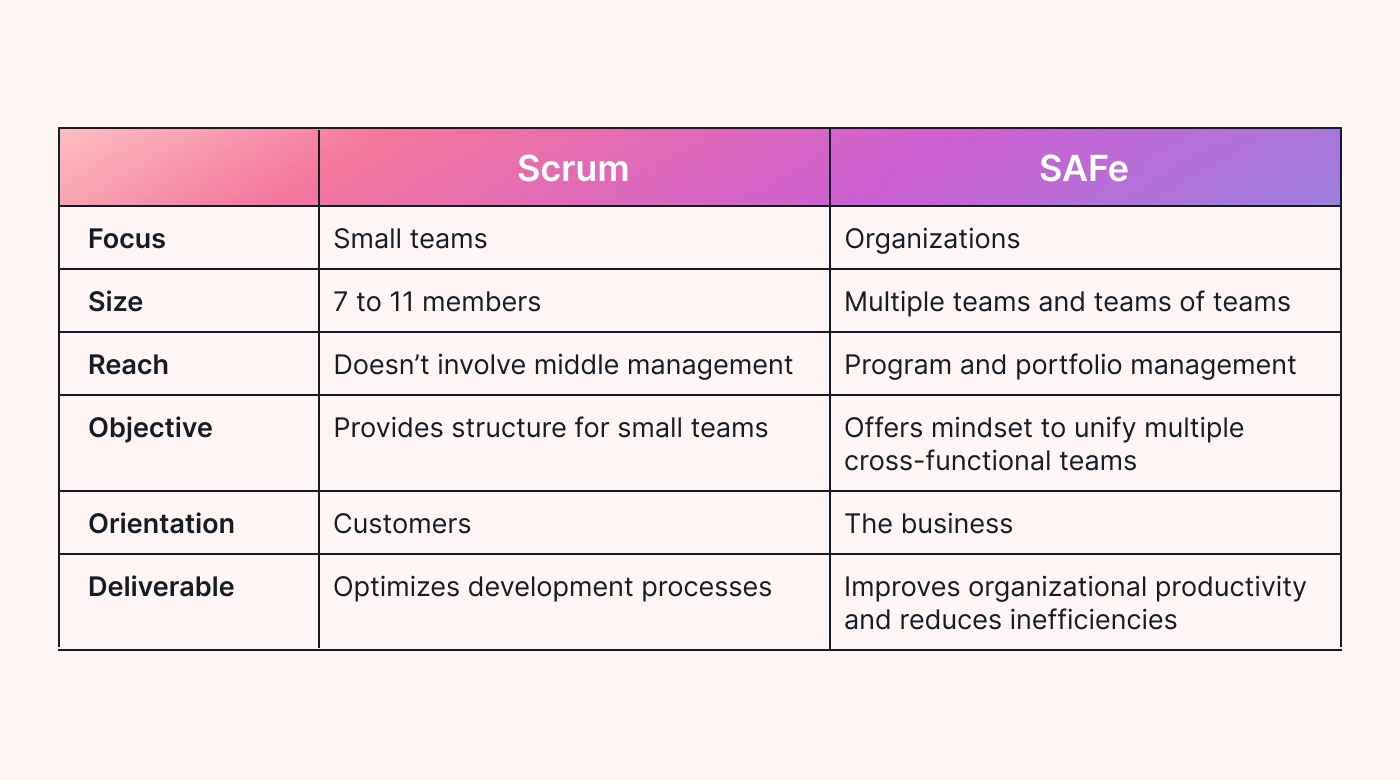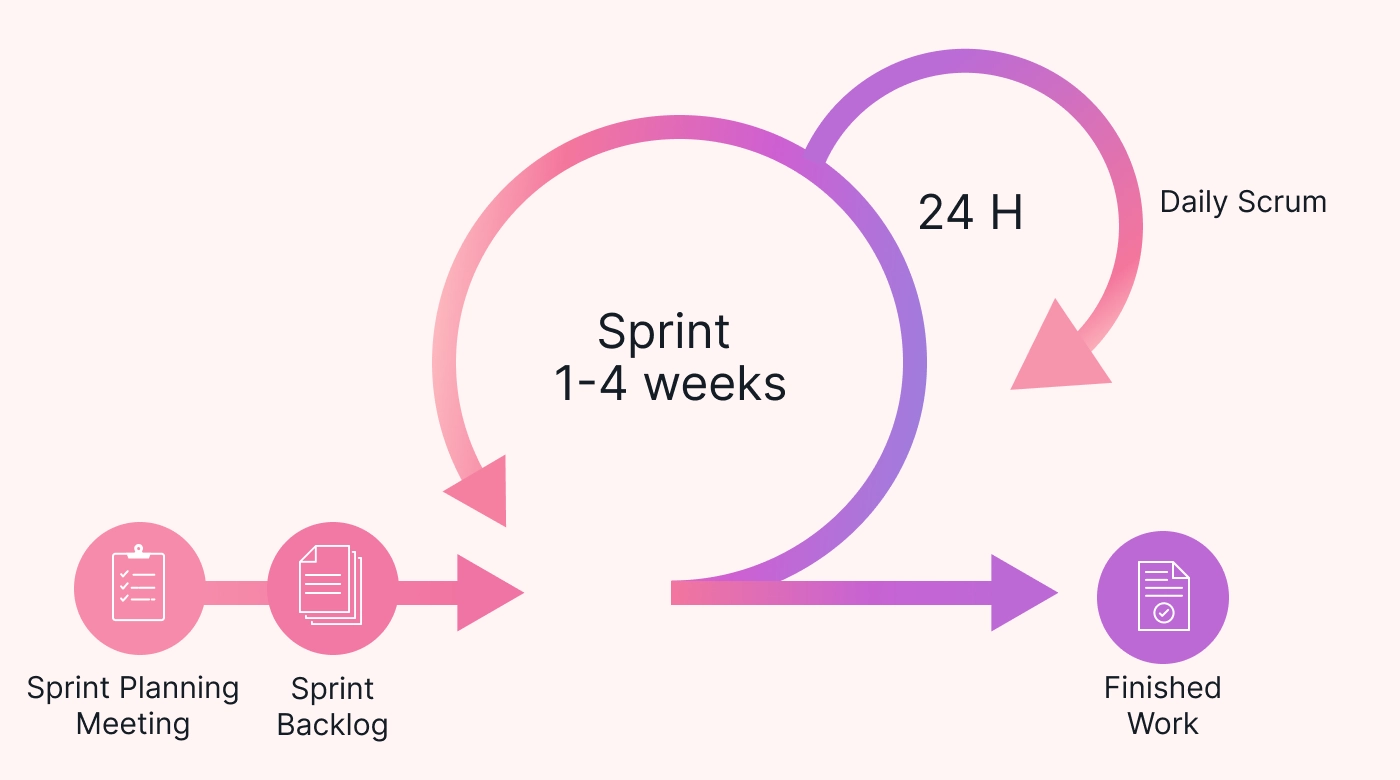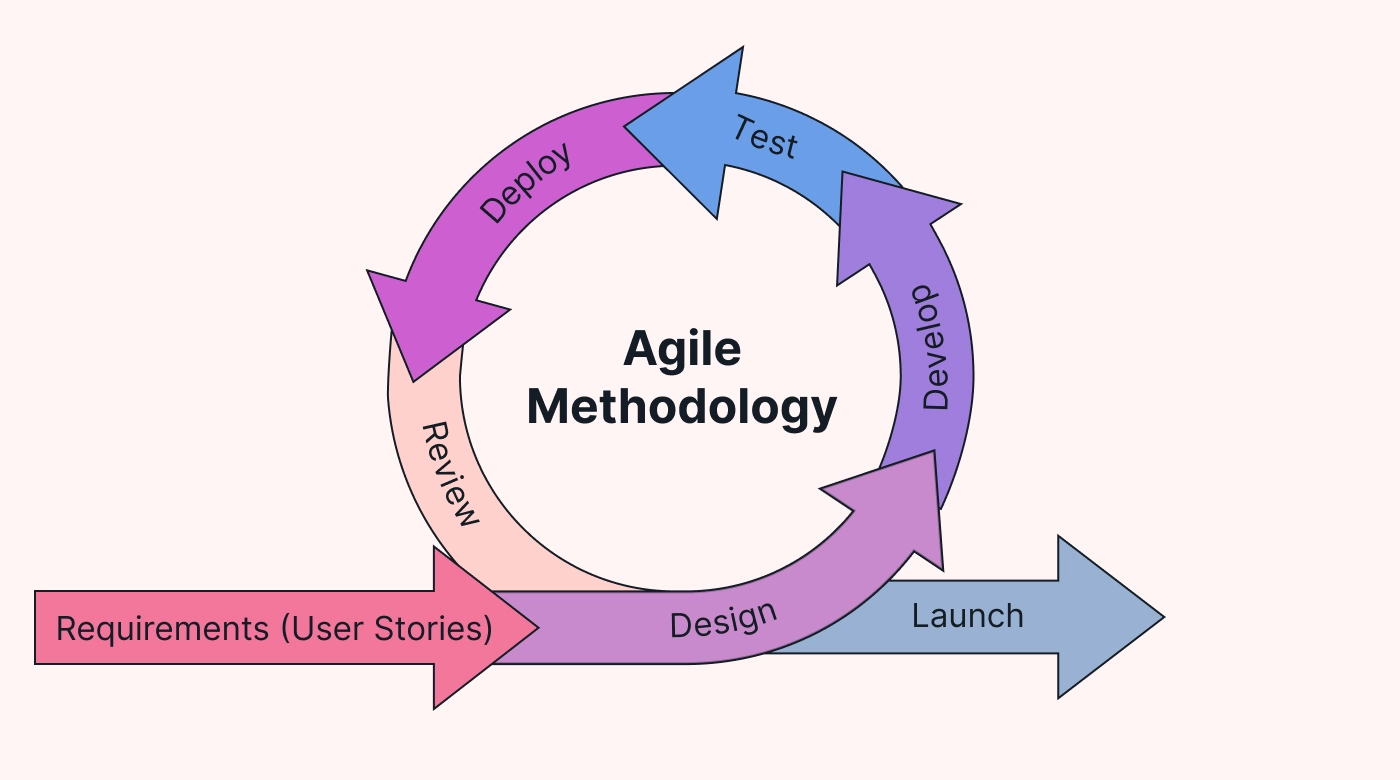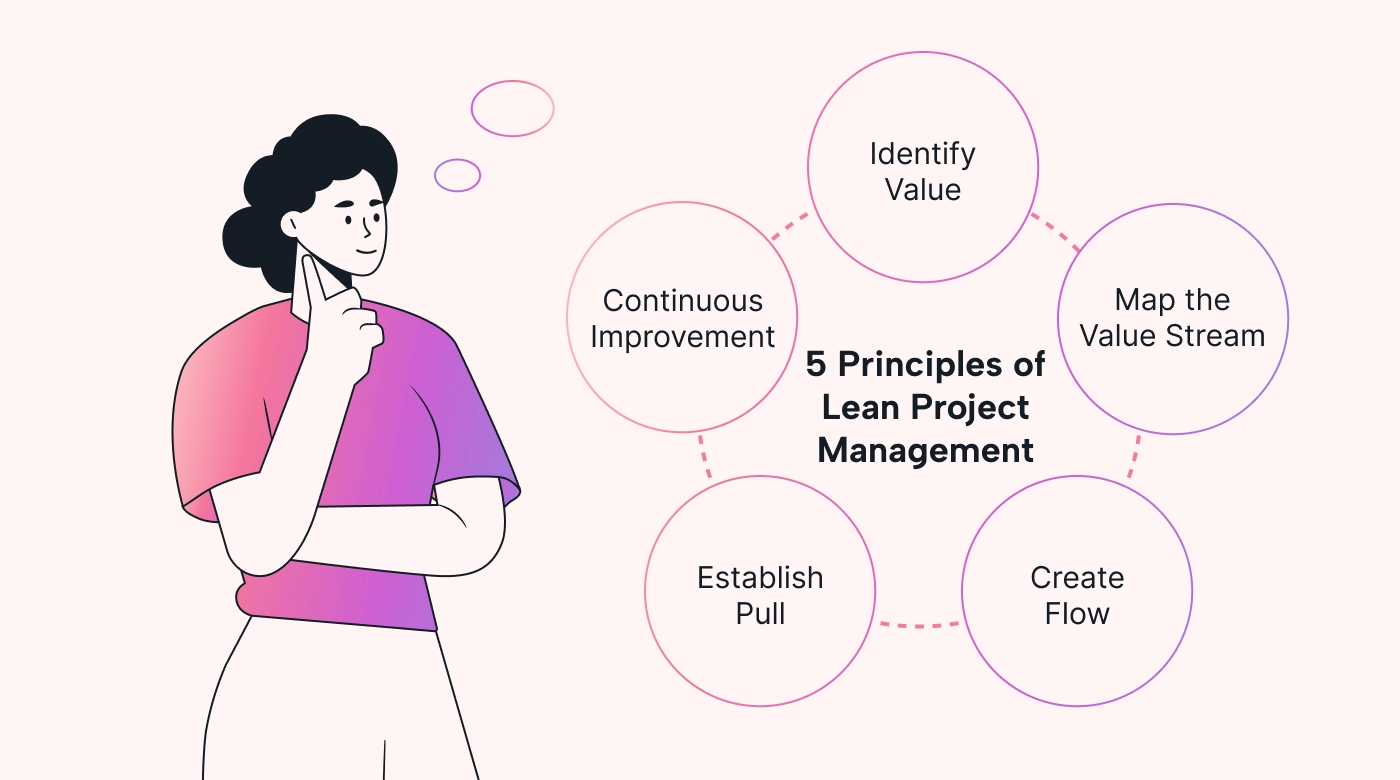It seems like everything these days is Agile. It started in software development and moved to business and project management. Agile project management is taking the world by storm.
But there's a profusion of distinct frameworks you can choose from, so which one is right for you, your business, or your project?
In this article, we'll look at Scaled Agile Framework (SAFe) and Scrum (it's not an acronym). We'll cover their major differences, pros and cons, and where it's best to use them, and we'll also touch on some other related frameworks.
What is Agile?
The first thing to understand is that SAFe (Scaled Agile Framework) and Scrum are (both) Agile software development frameworks. But that’s not all they are.
SAFe is also used to introduce and embed its two other core tenets in businesses: lean product development and system thinking. Meanwhile, Scrum is often an efficient way to bring the Agile approach to more general project management.
The common denominator is Agile. So, what’s Agile? Agile software development is where it started and revolves around iterative development (building or doing). That means that requirements and solutions evolve over the project's lifecycle.
What is an Agile framework?
The short version is that it’s a structured approach with a set of practices, principles, and guidelines that you can use to apply the Agile method to your projects. Two popular Agile frameworks are SAFe and Scrum. Both provide methods to manage and deliver high-quality products (including software) and services iteratively and incrementally.
At a high level, this means that they help your entire team to figure out:
- How to do the development work.
- What technical tools and practices to employ.
- What product scaling strategies to use.
Interestingly, many Agile teams mix and match Agile practices and techniques from different frameworks. And that’s OK. Using what works best for you is the Agile way.
What is Scrum?
The history of Scrum goes back to a 1986 Harvard Business Review article. Hirotaka Takeuchi and Ikujiro Nonaka wrote about how Honda, Canon, and Fuji-Xerox developed new products, using cross-functional teams and a simultaneous approach.
Their inspiration and the name came from the game of rugby. Rugby scrums involves eight players with highly specialized roles, each working in concert. In 1993, Jeff Sutherland and his team at Easel Corporation adapted the idea for software development.
There's a manual that tells you everything you need to know to set up and run a Scrum. The Scrum Guide (PDF) is only 14 pages long. Scrum usually involves a small team, or more than one team, working on a project.
The process has two leaders: the product owner and the Scrum Master. The product owner plans, organizes, and communicates the product delivery schedule. The Scrum master deals with program execution and working with a team.
A Scrum is broken down into sprints, which are like mini projects of 2-4 weeks. The Scrum master plans each sprint and usually involves a small team pulled together specifically for that mini-project.
Looking at its key advantages and drawbacks is helpful to understand the concept better.
Pros
- Optimized development processes. Distractions are less likely because each sprint is short and focused on just one element of the greater project.
- Self-organizing teams. Because rugby inspired the Scrum framework, each player has a clearly defined role. They're also highly motivated, and there's constant collaboration between teammates.
- Emphasizes end-user needs. Scrum is driven by the product owner, who, for purposes of development, is the proxy for the end user or customer.
- Fast delivery times. Delivering value (and built-in quality) early and often is a focus and the result of using the Scrum framework.
Cons
- Scales with difficulty. Scrum works well on projects with small teams but struggles with larger teams on complex projects.
- Scrum may require training. The artifacts and events around Scrum can be challenging for newbies to grasp, especially when they come from a Waterfall background.
What is SAFe?
It took more than a decade for Scrum's shortcomings to be worked out and something done to address them. That something was the 2011 launch of SAFe 1.0, the first publicly available version of the framework. Dean Leffingwell expanded it to apply Agile development practices at an enterprise level.
SAFe focuses on an organizational level rather than a team or individual, scaling Scrum to execute a business strategy. It uses historical data in its planning processes and has three components: lean product development, agile software development, and system thinking.
You might think of SAFe as a mindset more than a development framework. It offers many tools and approaches from various methods and philosophies. But it's not all-encompassing. You can flex up or down based on the size of your organization or your project needs.
If you’re thinking about deploying SAFe in your business, a good place to start would be to consider some of the pros and cons.
Pros
- It helps larger enterprises get Agile. Managing cross-functional teams is no picnic, and the framework offers you tools to simplify that process.
- Program Increment Planning. PI Planning helps you manage your interconnected teams towards mutual dependencies and milestones.
- Business goals alignment. Expanding Agile into the business allows you to break down silos, adopt policies to re-evaluate priorities, and foster synergy across the organization.
- Faster time to value. SAFe helps you roll out processes and protocols that get all your teams marching in line toward mutual goals.
- More engagement by employees. SAFe lets your people achieve mastery, autonomy, and purpose, unlocking their motivation.
Cons
- Jargon central. The framework has its own language that you need to adopt to be most effective.
- Rigid and formulaic. Ironically, SAFe is a rigid, structured framework with a top-down approach to decision-making. This undermines autonomy at lower levels.
 |
SAFe vs. Scrum
The two methodologies have common roots and may seem similar, but they were created for different purposes. Both follow the Agile framework but offer assorted benefits to teams and organizations. And, to muddy the waters, there are other Agile frameworks that you can consider.
Both frameworks offer a way to use Agile tools and techniques in your development practice. Scrum is deliberately structured so your team can naturally adapt to changing conditions and user requirements. The most detailed planning happens before each sprint, focusing on the result rather than how you get there.
A key difference is that SAFe looks at a longer-term planning horizon of eight to 12 weeks (using the PI Planning feature). Teams meet and develop a rough plan, agree on the approach, and hit the ground running. In theory, the plan is flexible, allowing teams to change it based on new knowledge. It doesn’t always work that way in practice, though.
SAFe Scrum
Early on, Leffingwell and his team at Scaled Agile realized this shortcoming could add unnecessary complexity to Agile development in large organizations. So, they combined what they saw as the best features of two Agile frameworks: Scrum and eXtreme Programming (XP). The result was called ScrumXP.
When SAFe 6.0 was launched in March 2023, ScrumXP upgraded to SAFe Scrum. There are three significant differences between SAFe Scrum and classic Scrum: terminology, timelines, and team size. For example, sprints are called iterations, which shouldn’t last longer than two weeks, and the minimum team size has been bumped up from three members to five.
Scrum@Scale
Scrum Inc. is a training and consulting firm that evangelizes Scrum to organizations. The limitations of classic Scrum became apparent quickly, so the company devised its own solution: Scrum@Scale.
As its name might suggest, it's designed to scale the fundamental Scrum process structure. But rather than providing an all-encompassing approach like SAFe, it offers a modular approach that lets you scale by adding components as needed.
It also has a dual-structure framework, divided into two cycles: one for the Scrum master and another for the product owner. This allows product and process improvements to happen independently.
Large Scale Scrum
There’s a similar origin story for Large Scale Scrum (LeSS). After receiving many requests for a way to scale Scrum, Bas Vodde and Craig Larman created the LeSS Framework. It’s like Scrum but involves coordinating multiple Scrum teams working on a single product. The critical emphasis is simplicity, transparency, and reduced roles, artifacts, and processes.
The tagline for Large Scale Scrum is telling: “more with LeSS.” The framework features fewer layers than SAFe and offers improved transparency across teams. At the same time, it supports the core principles of Scrum, like interactions over processes, only at a larger scale.
Before you choose a framework
An Agile framework will change how you approach business and software development. It’s a big decision. You should think about how deep you want to dive and how quickly.
Business agility
We know about Agile development, but there's also something called Agile Business. Promoted by the Agile Business Consortium, it's also based on the Agile Manifesto. The idea is for organizations to embrace agility, which helps them survive and thrive in ever-changing and complex business environments.
The consortium promotes nine principles of Agile leadership (which it maintains are essential for an organization to implement true Agile business change):
- Actions speak louder than words.
- Improved quality of thinking leads to improved outcomes.
- Organizations improve through effective feedback.
- People require meaning and purpose to make work fulfilling.
- Emotion is a foundation for enhanced creativity and innovation.
- Leadership lives everywhere in the organization.
- Leaders devolve appropriate power and authority.
- Collaborative communities achieve more than individuals.
- Great ideas can come from anywhere in the organization.
Lean management
One thing SAFe introduces explicitly that none of the other frameworks do is lean product management. The others focus on lean and Agile software development, but Leffingwell and the Scaled Agile team looked beyond that to the larger organization.
Lean management principles pioneered by Toyota in the 1940s inspired them. They saw an opportunity to bring that thinking to SAFe to make entire organizations Agile.
It involves a systematic analysis of processes and value streams. The goal is to reduce waste, variability, and inflexibility, which improves cost control, product quality, customer satisfaction, and employee engagement—often simultaneously.
Another key component is a continuous improvement mindset. This is made possible by flexible working processes that encourage all employees to contribute new ideas and suggestions. That makes the whole organization better over time.
Can I use Scrum and SAFe together?
The short answer is absolutely yes.
Scrum is the basis of all the frameworks mentioned, so it has to be possible to use them together.
If you're new to Agile, the best approach may be to start with Scrum. If you find it doesn't scale to your organizational structure, then you can consider the options to do Scrum at scale.
Getting started with Agile
Whether you're looking at Scrum to help you use Agile principles to manage your development team or another project, the process is the same. This is because Scrum is the common element, and:
- It's based on the principle of delivering continuous incremental value.
- It achieves this by implementing projects in short cycles or sprints. This provides a feedback loop and lets your team review past performance and factor in any lessons and recommendations into the next sprint.
- The release cycle repeats itself until the bigger project is complete.
The Agile methodology requires that development and testing are done simultaneously throughout the project. This means errors and miscalculations can be caught and fixed earlier.
The primary goal of using the Scrum framework is to deliver the most value for the customer quickly and regularly. It can help you evolve an adaptive solution for the focus problem. However, it requires close collaboration between the project team and all other stakeholders.
Putting your Scrum in Motion
Two Agile methodology elements are critical to project success: scheduling and communication. You can use Motion’s Project Manager app to handle those for you. The app lets you implement the Scrum framework, schedule meetings, and make it easy to collaborate with all stakeholders.
This is important because of Scrum's faster pace versus the traditional Waterfall approach.
You can use Motion to schedule daily Scrums, send out all communications, and delegate responsibilities to team members.
And the best part is that you can try it before you buy it. Motion has a 7-day free trial for you to experience the power of the AI-powered platform.

After 40-odd years of working in technology, project management, media, and marketing, Brian's career and growth journey has exposed him to a wide range of niches. He brings this breadth of knowledge and expertise in his content work through enriched storytelling and original concepts that make SaaS content engaging and accessible for readers of all stripes.







